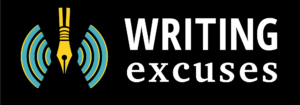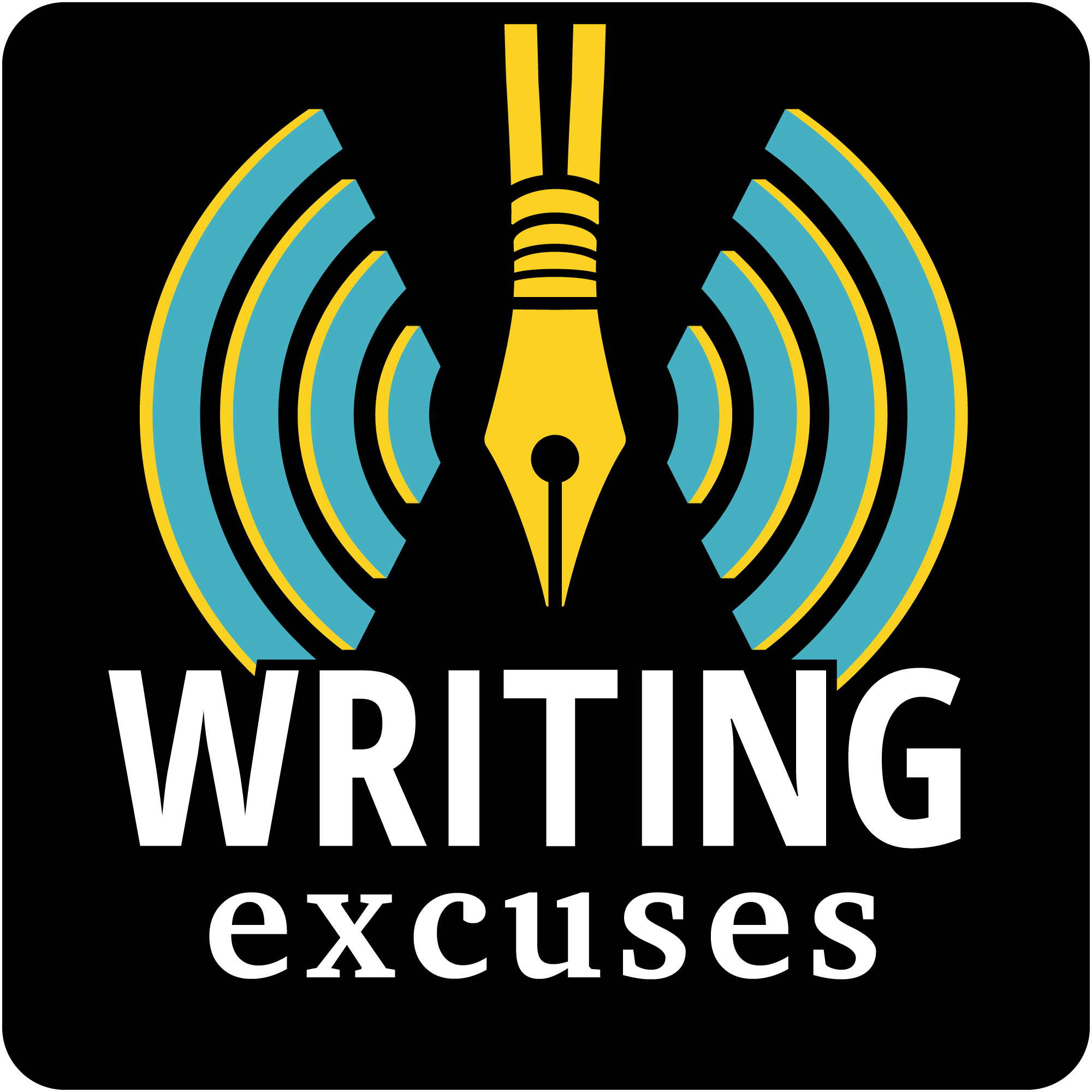Writing Excuses Episode 28: Writing for Webcomics with Phil and Kaja Foglio
This is the first of five episodes recorded on location at WorldCon 66 in the Colorado Convention Center in Denver. Brandon, Dan, and Howard are joined by Phil and Kaja Foglio, and we discuss writing for webcomics… no, wait… writing for “sequential picture-assisted storytelling.”
Phil and Kaja are the creators of Girl Genius, the web’s foremost hunk’ o’ steampunk — and we here at Writing Excuses are big fans. During our short time together they help us understand the nuances of creating Girl Genius pages, writing to the outline of the story, and crafting their dialog. The Foglios (and Howard) have a little bit of advice for folks looking to start their own webcomic, too.
(Mmmmm…. Grizzly Bear Soup!)
Powered by RedCircle
Transcript
Live from WorldCon, with Phil and Kaja Foglio of Girl Genius (see http://www.girlgenius.net/ which takes you to http://www.girlgeniusonline.com/ )
Plug: It’s adventure, romance, and MAD SCIENCE! Who could ask for anything more? [and Brandon adds: it’s steampunk, too]
We’re going to talk about writing for webcomics. No, serial artwork. Sequential storytelling. With pictures.
How is it different? Are there special considerations?
- Yes.
[long pause] - The big difference is the knowledge that for many people, this may be the only page they see. So it is best if the page is self-contained in some way — it has a joke, a major plot point, good costumes, something so that people say, “how amusing/interesting” and want to come back.
- I fight that a little bit. To me it’s important that it’s still be a good story and still hang together in the same way the books hung together. I have no objections to each page being awesome. But sometimes trying to have a joke on each page — you don’t have to do that.
[discussion of whether or not the style changed] - people say now you end with a cliffhanger on each page. That’s just good writing. A story that isn’t finished yet is going to have a cliffhanger because you don’t know what happens next.
So what’s different?
- dialogue has to be a lot tighter to fit in bubbles, but I’m getting away with murder on the description of scenes.
- you can see it in the pictures
- just add a [plosive plop] moment
As a prose writer when I’m writing, when I get to a point I can go back and change it. How do you deal with the… do you change things in the past, do you retcon it or do you just leave it and try to work around it?
- we spent from 1993 to 2001 coming up with the story. We have a pretty good idea where it is going.
- a major rule of improv is don’t contradict
- no retcon, just dance as fast as you can
- I’m a discovery writer
You have an outline. How far are we in that story arc?
- we don’t know.
- We tell people we are about one third to one half through the arc, but . . .
- we know the general arc, the beginning, middle, and end. But sometimes getting from point A to point B — there are some really interesting things, and there maybe strange ways to get there that we haven’t foreseen.
- We love our plot bunnies. We raise them (inaudible)
- This is so common among webcomics. Eric Burns talks about First and Ten syndrome and Cerberos syndrome. This is where you are a discovery writer, and part way through just throw out the outline and declare that it is now a romantic drama.
[Psst? A bit of googling showed Eric Burns websnark, and the lexicon at http://www.websnark.com/archives/2004/09/faq_lexicon.html which defines
Cerberus Syndrome – creating character development by adding layer on layer – via a transformation
First and Ten Syndrome – a failed Cerberus Syndrome. Instead of ending up with developed characters and a sense of reality, a descent into angst and ugliness.]
Have you done anything special to hone dialogue?
- sometimes you just have to hammer at it. There often key things that have to come through on the page, and you work at it.
- creating compact disk text blocks. If there are three words ending in “o” on the edge, people’s eyes follow that and go ooo. So I work on word arrangement, graphic design.
What mistakes are people likely to make when they are starting their own web comic?
- over explaining. Don’t tell too much, don’t explain it. The reader will tell the joke better than you can.
- Girl Genius tosses you right in, it forces the reader to pick up a lot. There is no narrative explanation.
- We’re supposed to be good enough to tell you the story without having to stand up in front of you and tell it to you.
- discussion of the first line “Let me tell you a Heterodyne story, but not a Heterodyne story like your mother will tell you…”
- we don’t know who they are, but we know we should
Advice for people who want to start a web comic?
- Look at lots of web comics. Take notes. What works. Write things up and show it to people. Assume the first couple of times, it’s going to eat. And that’s not the end of the world. The next time you’ll do better.
- write what you’re passionate about, what you enjoy. If you’re good enough to make money at it, people will expect you to keep doing it
- you’re going to be trapped!
[very audible exclamation, but I’m not sure what was said]
For me, one of the turning points in my career as a writer came when a writer stood up and said, “yes, you can do this, you can make a living at it.” Can they do it?
- have no fear. Keep doing it.
- don’t give up. You need a self-image cast in titanium.
Parting Words
- making a living in web comics is like making bear soup. Step one, catch a live bear. steps two through 10 are just making soup. The hard part is to catch a bear. Stick with it, make your art — write about what you are passionate about, be excited about it, know that you’re going to get your face clawed off your head and don’t back down.
- Current Mood: retconned

